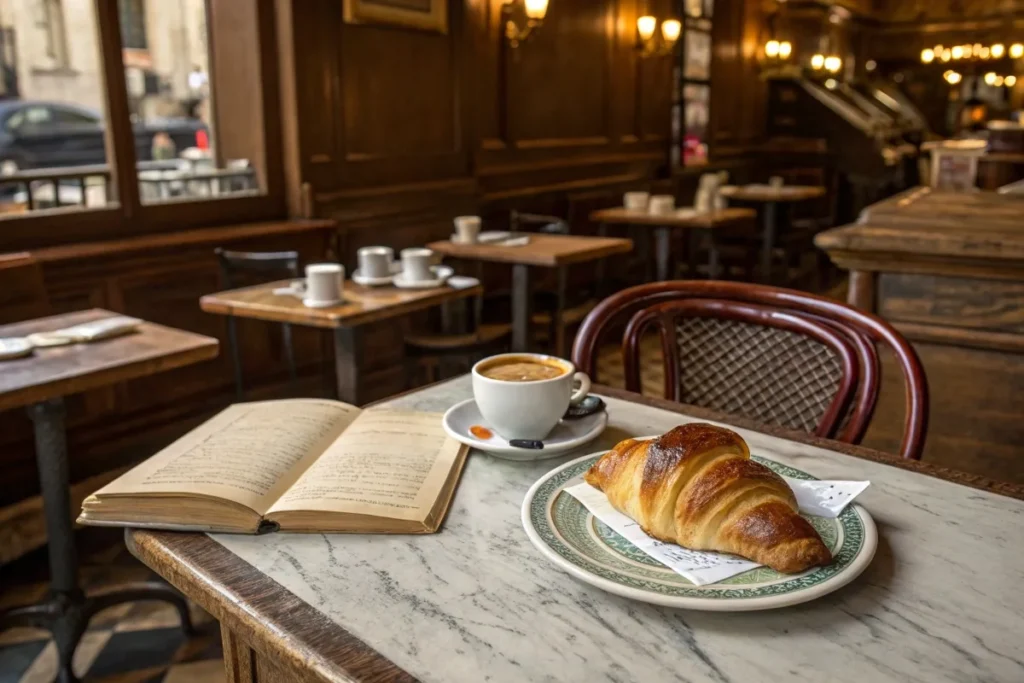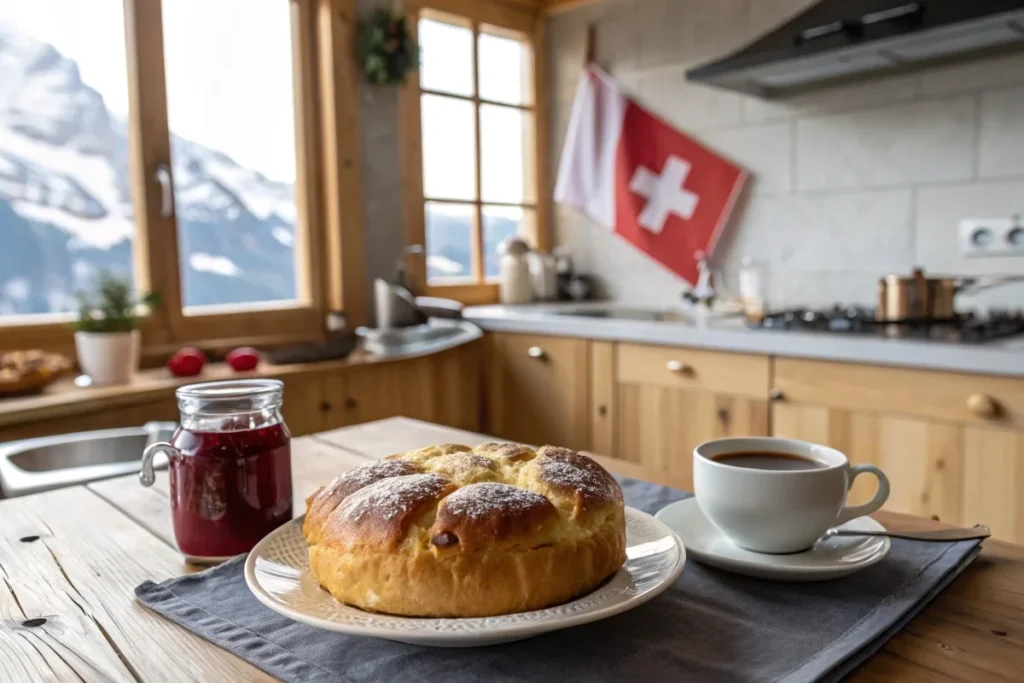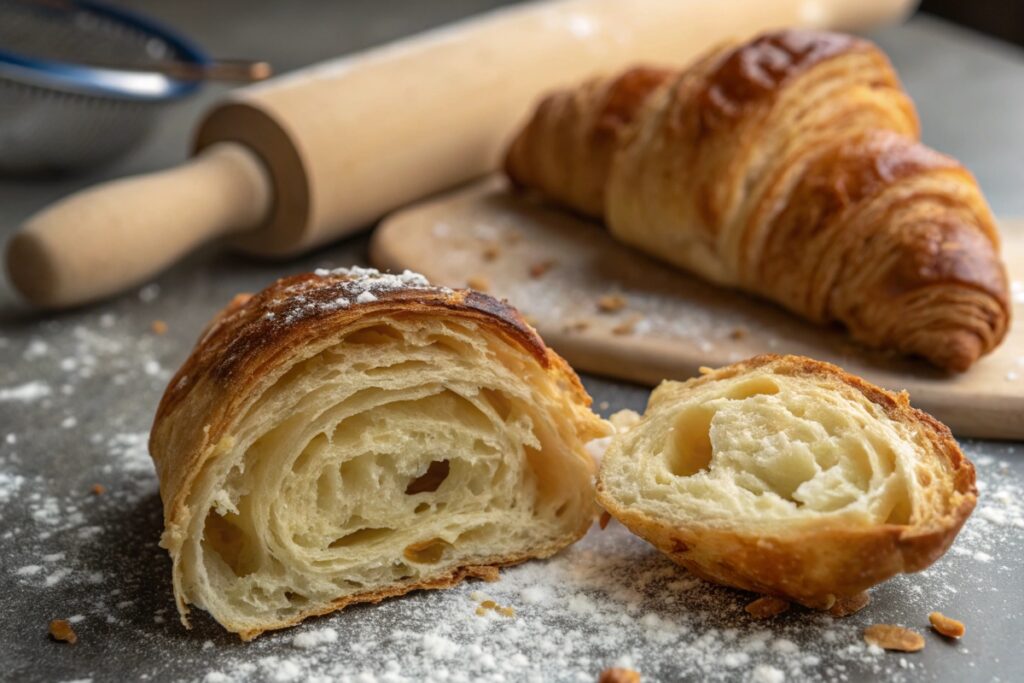What is the difference between a croissant and a gipfeli? If you’ve ever found yourself wondering about this pastry mystery, you’re not alone! These two delicious treats have a lot in common, yet they each bring something unique to the table. First, both are buttery, flaky, and perfect for breakfast or a snack, but their origins and textures tell a different story. While croissants have French roots, gipfeli is a beloved Swiss pastry with its own special characteristics. So, why does it matter? Well, knowing the difference means you can enjoy each one for exactly what it offers—whether you’re craving a lighter, crunchier bite or something with a bit more density. In addition, understanding their subtle differences can open up a world of tasty options! Keep reading to dive into the delicious details and find out which one suits your taste buds best. You’re going to love this pastry journey!
Table of contents
- Understanding the Origins of Croissants and Gipfeli
- Key Differences in Texture and Taste Between Croissants and Gipfeli
- Ingredient and Preparation Variations in Croissants vs. Gipfeli
- Regional Preferences: Croissant vs. Gipfeli Around the World
- The Role of Croissants and Gipfeli in Modern Breakfasts
- Frequently Asked Questions (FAQs)
- Which Pastry Will You Choose: Croissant or Gipfeli?
Understanding the Origins of Croissants and Gipfeli
The History Behind the Croissant’s Creation
What is the difference between a croissant and a gipfeli? It all starts with their origins. The croissant has a rich history rooted in France, where it was inspired by the Turkish crescent pastry. Over time, it evolved into the buttery, flaky treat we know today. In contrast, the gipfeli is Switzerland’s beloved version of the croissant, often thought to have come from Austria. The key difference here is the cultural influence. Croissants are associated with French elegance and sophistication, while gipfeli brings the warmth of Swiss tradition. Both pastries have deep cultural ties but come from different parts of Europe. It’s fascinating to see how two similar pastries could emerge with such distinct identities!

How the Gipfeli Became a Swiss Breakfast Favorite
In Switzerland, the gipfeli has become an essential part of breakfast. Unlike the croissant, which often features layers of butter and a slightly sweeter taste, the gipfeli is simpler, with a lighter, more subtle flavor. Swiss families enjoy it fresh from the bakery, paired with coffee or jam. What is the difference between a croissant and a gipfeli? The gipfeli’s lighter, more neutral taste makes it a versatile breakfast option, easy to customize with various fillings. While the croissant is a popular choice worldwide, the gipfeli remains firmly rooted in Swiss tradition, loved for its comfort and simplicity.

Key Differences in Texture and Taste Between Croissants and Gipfeli
Why Croissants Are Flakier Than Gipfeli
Croissants are known for their distinctive flaky texture. This is achieved through a technique called laminating, where dough is folded over layers of butter, then rolled out repeatedly. This results in the signature flaky layers you get when you bite into a croissant. What is the difference between a croissant and a gipfeli in texture? Croissants are definitely flakier, as the layers of butter and dough separate more easily. On the other hand, gipfeli is more compact and slightly denser, offering a chewier bite. The difference is all in the preparation—croissants focus on achieving maximum flakiness, while gipfeli emphasizes simplicity and consistency.

The Subtle Taste Variations Between the Two Pastries
The taste difference between a croissant and a gipfeli lies in their ingredients and preparation. Croissants are rich and buttery, with a slightly sweet flavor that comes from the layers of butter and a touch of sugar in the dough. What is the difference between a croissant and a gipfeli in taste? Croissants offer a more indulgent, almost dessert-like experience. In comparison, gipfeli is more neutral, with a mild buttery taste that allows the bread’s flavor to shine through. This makes gipfeli the perfect base for savory spreads or cheeses, while croissants are often enjoyed with sweet jams or as part of a lavish brunch spread.
Ingredient and Preparation Variations in Croissants vs. Gipfeli
What Makes Croissants Richer in Butter
The secret to a croissant’s richness is all in the butter. What is the difference between a croissant and a gipfeli when it comes to ingredients? Croissants are made with an abundance of butter, which gives them their flaky texture and rich, buttery flavor. The dough is rolled and folded multiple times to incorporate the butter, creating layers that puff up when baked. In contrast, gipfeli is made with less butter, resulting in a lighter, less rich pastry. While both are delicious, croissants tend to have a more decadent feel, perfect for those who crave something indulgent in the morning.
The Unique Ingredients Found in a Gipfeli
What is the difference between a croissant and a gipfeli in terms of ingredients? Gipfeli uses simpler ingredients compared to its French counterpart. While croissants rely heavily on butter and sugar, gipfeli’s dough is more straightforward, with flour, yeast, and a little butter. This gives the gipfeli a more neutral flavor, which pairs wonderfully with savory toppings like cheese, ham, or marmalade. The simplicity of gipfeli’s ingredients makes it a great all-rounder, ideal for those who prefer a less sweet breakfast pastry. It’s a wonderful example of how less can sometimes be more in the world of pastries!
Regional Preferences: Croissant vs. Gipfeli Around the World
Croissants’ Popularity in France and Beyond
Croissants are a global favorite, but their heart and soul lie in France. What is the difference between a croissant and a gipfeli in terms of global popularity? Croissants have become synonymous with French breakfast culture, often enjoyed with coffee or as a snack throughout the day. Outside of France, croissants are a staple in bakeries worldwide, beloved for their buttery taste and elegant appearance. In fact, many countries have embraced croissants, making them a familiar treat in cafés from New York to Tokyo. Their international popularity has cemented their place as one of the most iconic pastries in the world.
How Gipfeli are Enjoyed Across Switzerland
In Switzerland, gipfeli is the go-to breakfast pastry. What is the difference between a croissant and a gipfeli when it comes to Swiss culture? While croissants are also popular in Switzerland, gipfeli holds a special place in Swiss hearts. It’s often served with morning coffee and paired with a variety of fillings, from sweet fruit jams to savory cheese. In Switzerland, the gipfeli is a symbol of tradition and simplicity, enjoyed daily in homes and cafés alike. It’s a beloved pastry that reflects Swiss values of comfort, quality, and practicality, standing strong alongside the more indulgent croissant.
The Role of Croissants and Gipfeli in Modern Breakfasts
Croissants as a Trendy Brunch Option
Croissants have become a trendy brunch option worldwide, often filling tables in cafés and restaurants. What is the difference between a croissant and a gipfeli in modern breakfasts? Croissants are often seen as a chic, fashionable pastry choice, served with eggs, smoked salmon, or fresh fruit. They make a statement at brunch, offering both style and flavor. Their versatility allows for endless variations, from sweet to savory. Whether part of a larger spread or enjoyed solo, croissants elevate any brunch experience, making them a go-to choice for those who want a little luxury in their morning meal.
Gipfeli: A Traditional Swiss Breakfast Staple
Gipfeli remains a true Swiss breakfast staple, offering a more traditional start to the day. What is the difference between a croissant and a gipfeli in today’s breakfasts? Gipfeli is seen as the more humble and practical option, perfect for a quick, no-fuss breakfast. Its light, slightly less indulgent nature makes it ideal for those who prefer a simpler pastry without the richness of a croissant. Whether eaten plain or with toppings, the gipfeli’s simplicity is its charm. It’s a pastry that brings comfort and tradition to the breakfast table, especially for those who cherish Swiss culinary culture.
Frequently Asked Questions (FAQs)
Is A brioche the same as a croissant?
A brioche and a croissant are both delicious pastries, but they are quite different! Brioche is softer, sweeter, and more bread-like. It’s made with a higher amount of butter, eggs, and sugar, which gives it a rich, slightly sweet taste. On the other hand, croissants are known for their flaky, buttery layers, achieved through a special dough folding process. So, what is the difference between a croissant and a gipfeli? Well, both croissants and brioche have butter, but croissants are much flakier and less sweet than brioche. If you’re craving something soft and sweet, brioche is your go-to!
What’s the difference between croissants and sourdough croissants?
Sourdough croissants are a twist on the classic! While traditional croissants use yeast for rising, sourdough croissants are made with a sourdough starter, which gives them a tangy flavor. This subtle difference in fermentation creates a more complex taste. What is the difference between a croissant and a gipfeli? Well, croissants, whether regular or sourdough, are typically flaky and buttery, while gipfeli has a lighter, denser texture. Sourdough croissants have a slight sour note and a chewier interior. They’re perfect for those who love a little extra zing with their pastry, while croissants keep it classic.
What is the Swiss version of a croissant?
The Swiss version of a croissant is called a gipfeli! It’s similar to a croissant but has some key differences. Gipfeli is a beloved breakfast pastry in Switzerland, often enjoyed with coffee or jam. What is the difference between a croissant and a gipfeli? While the croissant is rich and flaky, gipfeli is lighter and less buttery. The dough used for a gipfeli is simpler, and it often has a more subtle taste. It’s perfect for those who want a slightly less indulgent pastry to start their day. Whether you call it a croissant or a gipfeli, both are delicious!
What are the two types of croissants?
There are two main types of croissants: the classic butter croissant and the almond croissant. The butter croissant is the traditional, flaky, and buttery pastry that most people know and love. It’s perfect for any time of day. The almond croissant, on the other hand, is filled with a sweet almond paste and topped with slivered almonds. It’s a slightly sweeter option, often enjoyed as a treat or at brunch. What is the difference between a croissant and a gipfeli? While both croissants are rich in flavor, gipfeli is simpler and more versatile in its fillings.
Which Pastry Will You Choose: Croissant or Gipfeli?
Now that you know the key differences, it’s time to choose: What is the difference between a croissant and a gipfeli, and which one will you pick? If you crave a buttery, flaky pastry with layers of decadence, a croissant might be your best choice. On the other hand, if you prefer something a bit lighter with a simpler, comforting flavor, the gipfeli could be your go-to. Both pastries have their unique charm, whether you’re in the mood for a rich treat or something more subtle. The fun part is that both are delicious, so why not enjoy them both depending on your mood? Whether it’s for breakfast, brunch, or a snack, each one brings a little joy to your day. So go ahead, indulge in whichever pastry calls to you, and enjoy the wonderful flavors these iconic treats have to offer!
